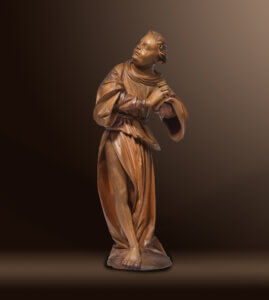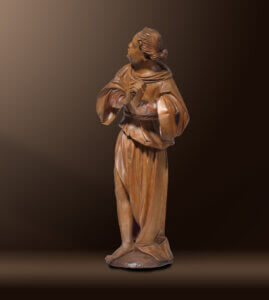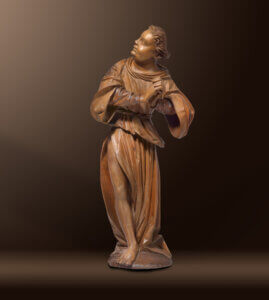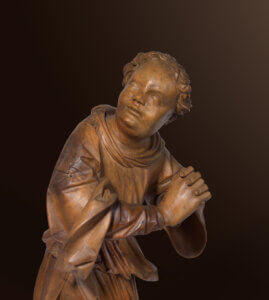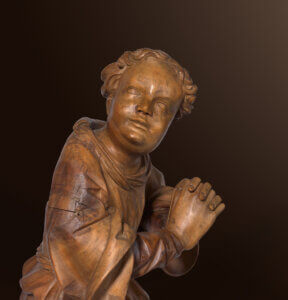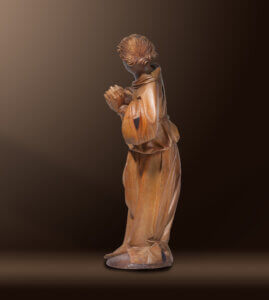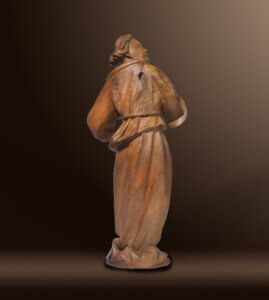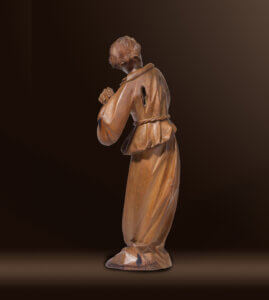The masterful sculpture was made in the workshop of the master of the altar of Mauer around 1500 in Lower Austria. It can be located in the context of the Danube school of the first third of the 16th century, was carved from limewood and is 55 cm tall. Since there are no attributes or context, it is an unknown figure of a carved altar.
The master of the altar of Mauer is an anonymous Gothic carver who was active between 1500 and 1525 and received this so-called emergency name through the altar for the parish and pilgrimage church of Mauer near Melk. This winged altar was probably commissioned by Göttweig Abbey in the 1470s and is made of lime wood. It shows an expression in the transition from late Gothic to early Renaissance and is considered the most important carved altar in Lower Austria, created between 1510-15.
The figure presented here is very related in its design to the figures of the altar of Mauer. In lively-moving form, the male figure turns his upper body to the right, with his head pointing upward, probably toward the sky. The right leg in lunge emerges from under the frock-like clothing; the bare foot is placed in a stable position on the entire sole of the foot in front of the body. As if paused in motion, his hands are clasped in front of his chest in a gesture of prayer, giving a closed impression despite the figure’s expansive effect. This dynamized physicality is underlined by the richly elaborated and angular drapery of the robe. Particularly similar is the puffed, belted upper garment like that of the Archangel Gabriel in the Annunciation scene of the altar of Mauer. However, the restrained treatment of the clothing suggests that this is a secondary figure, possibly a shepherd. Other typical features of this masterful image carver are an angular face shape and characteristic physiognomy with strongly modeled skin surfaces, deep-set, sharply defined eye areas and accentuated dimples on the chin.
These features come out particularly well due to the absence of polychromy. Just like the altar of Mauer, this figure could have been designed for wooden visibility. Adolf Schmidl describes this in his travelogue from 1835 as the “genius of the master without all cover” (Adolf Schmidl, Wien’s Umgebungen auf zwanzig Stunden im Umkreise. After own wanderings described by Adolf Schmidl, Vienna 1835, p. 331). It is conceivable that the active master did not employ a barrel painter in his workshop who could have painted the figures and reliefs. It is possible that the commissioned works, such as the altar at Mauer, were delivered without polychromy. The altar also remained wooden; whether due to lack of money or for aesthetic reasons is unclear. This is also said to be the case, for example, with the carvings of Tilman Riemenschneider, an important sculptor of the late Gothic period, who merely gave the figures a tinting glaze and partial polychromy.
The facial physiognomy with thin brows, a prominent nose and chin, and full lips is further related to the drawing of a bust of a monk by Martin Schongauer (1450/91). This could have been included in a composition that was disseminated as a copperplate engraving and served as a model for carvings, as is also reflected in the reliefs of the altar at Mauer near Melk. While the form and expression still have elements of the late Gothic, the twisted movement of the figure reveals a threshold position to the early Renaissance.
